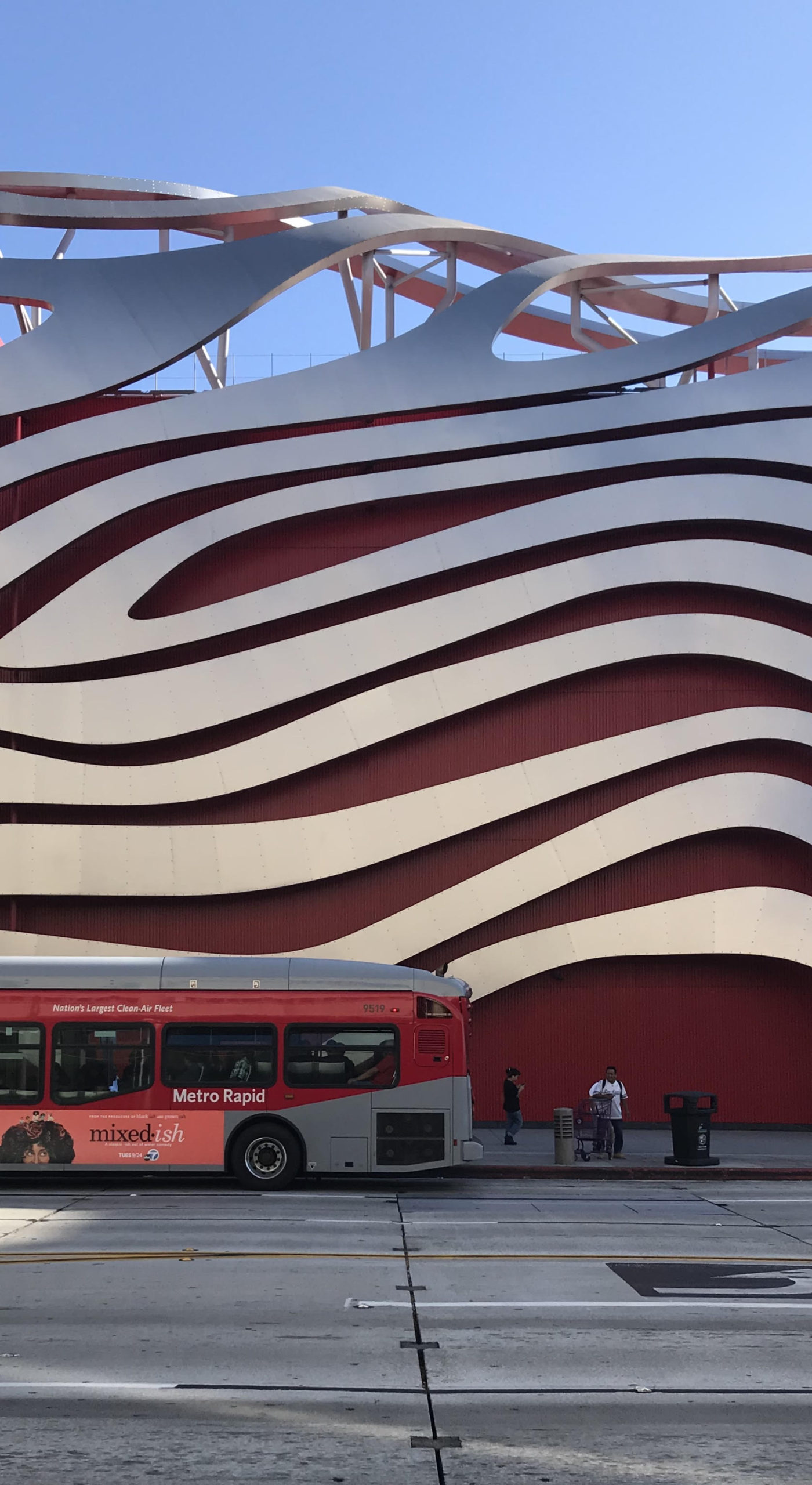
The Petersen Automotive Museum in Los Angeles, founded in 1994 by magazine publisher Robert Petersen and his wife, underwent a dramatic $125 million renovation in 2015. The renovation was conceived by New York-based architecture firm Kohn Pedersen Fox.
This building is one of the largest automotive museums in the world, housing more than 100 vehicles in more than 25 distinct galleries. Focusing on Southern California car culture, it holds many of the conceptual vehicles used in specatular Hollywood blockbusters like Back to the Future, Cars, Blade Runner and Batman Returns. This museum not only documents the evolution of the automobile but our love affair with the technology — how it has captured our affection and imagination.
The dramatic skin on this building is evocative of speed and organic forms that cover the complex, inner workings of a vehicle. The skin is supported by a simple red box building, like a car body mounted to a frame. The stainless steel ribbons that cover the building weigh more than 100 tons and are held in place by 25 struts and more than 140,000 custom stainless steel screws. During my visit I was struck by how the automobile became so embedded in our lives, culture and art. Even if you don’t own one, automobiles have dominated our experiences — both real and imaginary — for decades.
They have transformed our cities and rural landscapes. This complex piece of equipment has fused itself to our everyday lives in a way few technologies can boast. It has become a part of who we are, how we think and how we behave in the world.
We are certainly at an inflection point regarding transportation technologies, and it is interesting to speculate how our relationship with the automobile will evolve. Many purport technological advances are not strong enough to disrupt our love affair with our cars. Others say that new technologies will save lives and make owning a personal car impractical. Some think electric, driveless vehicles will merge with communication technologies to become a high velocity, personal, immersive cell phone. Some speculate personal vehicles will eventually take to the air. Regardless of the future we will need museums and these collections to remind us of days past — to help us understand our changing relationship with this potent technology.
